
Are you excited to start reading? Those of you who have already signed up for our Summer of Mystery Club will find your reading list (and schedule) on page 4 of your welcome pack. Those of you who have not yet signed up (but may be interested in doing so) might like to find out which ten books we will be reading.

So, what’s on the list?

1. Sweet Danger (1933)
Written towards the beginning of her career, this inventive title shows Allingham’s endless willingness to experiment with narrative style: there are some breathtaking visual sequences that are straight from early cinema, several entertaining set pieces, and a portrait of Essex village life that’s the complete opposite of gone to earth in its many strange surprises. Plus, an energetic teenage heroine who drives the plot (and the world) forward with her innovative water-powered electric contraptions? What’s not to like?

2. Death of a Ghost (1934)
From the famous Lafcadio blue, to vibrating auras of beautiful apple green, there’s a lot about colour in this novel, the first of Allingham’s many candid and witty explorations of the interpersonal tensions of unconventional extended households. Campion finds himself in the small world of London’s Little Venice, to unravel a deathly puzzle of posthumous reputation.
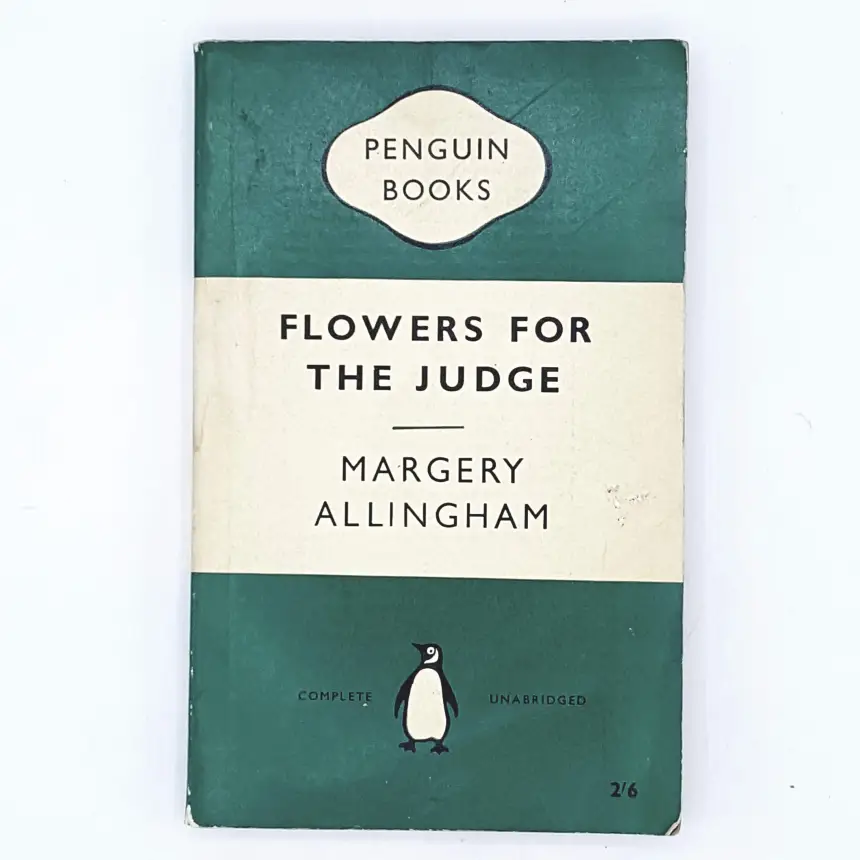
3. Flowers for the Judge (1936)
What could be more respectable than Barnabas & Co, London’s long-established firm of family publishers? But what’s that hidden in the basement? Behind the door? Or over that wall? Expect the unexpected.

4. Dancers in Mourning (1937)
“Play some of the old songs, Squire darling, play Third in a Crowd . . . “
Reliant on the creative energy of one man’s dancing feet, what happens when a desperate entourage of hangers-on turns toxic?
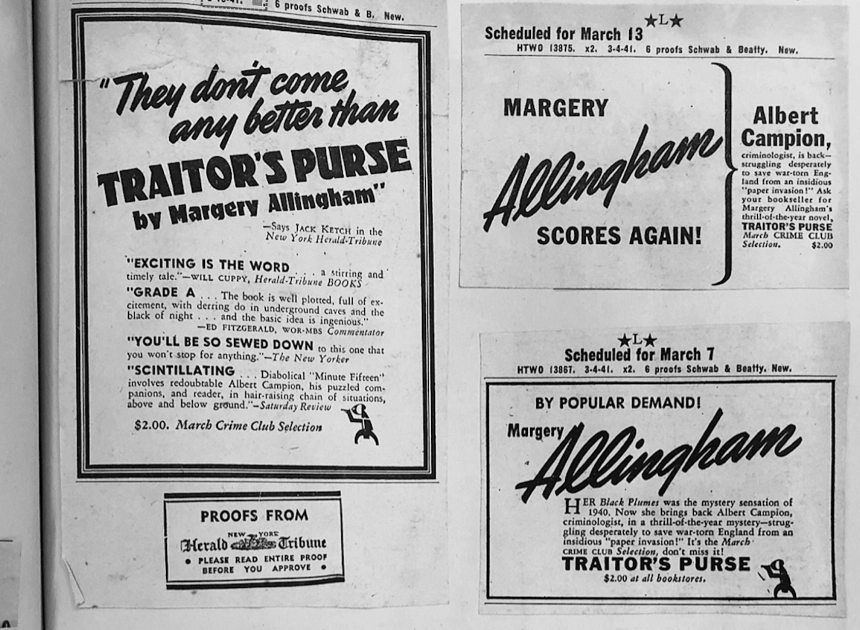
5. Traitor’s Purse (1941)
“Campion. It’s written in my suit.”
The ground beneath the reader’s feet is completely ripped away in this gripping wartime thriller, in which all that Albert Campion holds dear comes under threat.
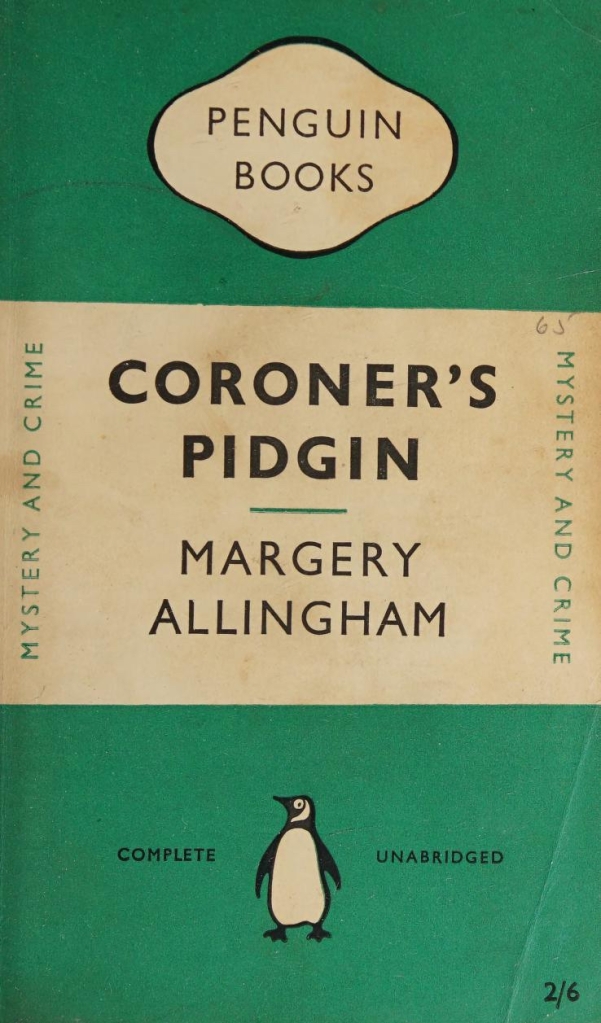
6. Coroner’s Pidgin (1945)
While an exhausted Campion tries his level best to just get home, war-weary London finds itself caught between two “very different worlds”. A particularly fascinating exploration of class privilege and entitlement, to whose plot the always excellent Lugg is key.

Map of the Barrow (Harrow) road from More Work for the Undertaker
7. More Work for the Undertaker (1948)
A vivid and affectionate “slice of London life as rich as a dark plum cake” (in the words of Elizabeth Bowen). Campion rejects a prominent diplomatic role for an extended stay in Renée Roper’s boarding house, where, in the company of a colourful cast of local characters, he investigates the perplexing Palinode case.

8. The Tiger in the Smoke (1952)
Probably the best known, (and best regarded) of Allingham’s novels, she riffs on British anxieties about post-war urban criminality in this truly spine-chilling exploration of good and evil.
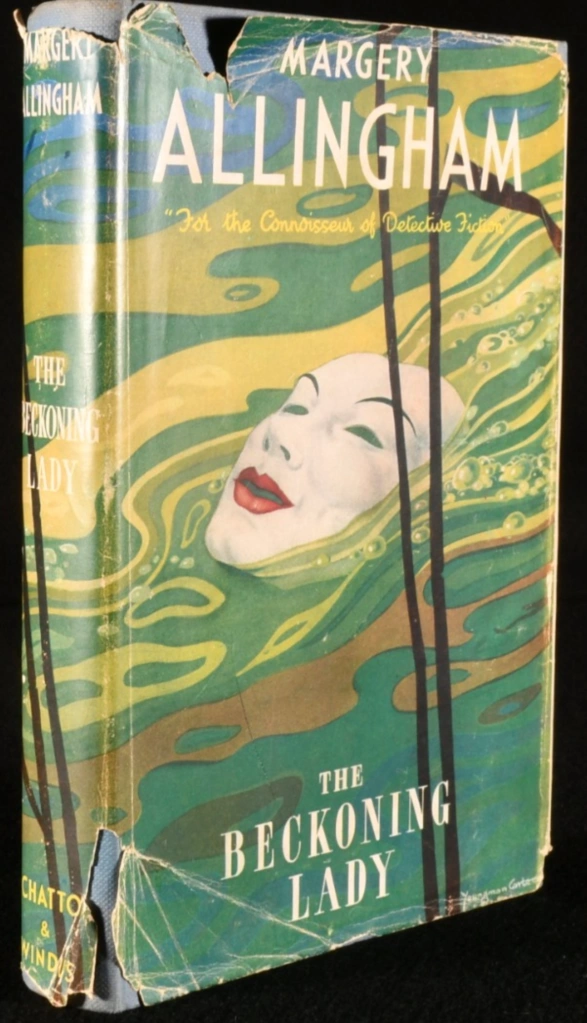
9. The Beckoning Lady (1955)
We return to Pontisbright, where, one midsummer’s eve, we watch a conflict of creativity, capital and corruption play out, all accompanied by the unholy strains of the Glübalübalum.
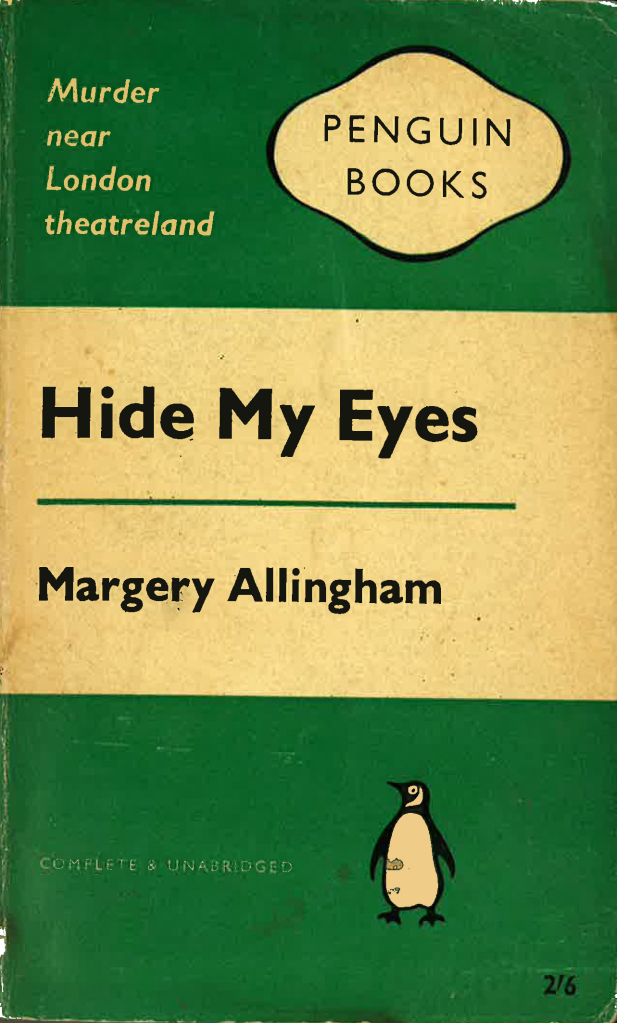
10. Hide My Eyes (1958)
Discover the depths of human depravity and the height of disinterested love over 24 thrilling hours in 1950s London.

So that’s the Summer of Mystery reading list! In your Club Welcome Pack, you’ll find some further information about editions and formats, and here also are a few FAQ that you may have:
Do I have to read all these books as a club member?
Absolutely not! Read as many or as few of the titles that appeal to you; complete your reading privately, and / or feel free to share your thoughts in our readers lounge. How you take part in the Summer of Mystery book club is completely up to you!
Why didn’t you start at the beginning?
I know many of you like to read every novel in a series, in order of their release. I’m not one of those people, and have instead chosen the titles I like best and which, to me, feel most representative of Margery Allingham’s many different styles and the various stages of her literary career. In her very early novels, she is still finding her feet as an author, and some later titles you might find listed as “Campion” novels are not in fact by Allingham at all, but were written after her death by her husband, Pip Youngman Carter. Our club follows a selection of titles in chronological order, but you certainly aren’t compelled to read them that way. Equally, there’s nothing to stop you starting at the beginning of Allingham’s oeuvre, and reading right till the end, if that’s your bag.
And finally, a note on language
Allingham was writing in Britain between the 1920s and the 1960s and was very much an author of her time. In some of the books on our list, you may find occasional uses of language, instances of stereotyping, or attitudes expressed by narrators or characters which are unacceptable. We acknowledge the offence such language and / or attitudes may cause, which in no way reflects the inclusive and welcoming spirit we wish to extend to all at KDD. For a thoughtful and lucid discussion of how to approach such issues as a reader (or, indeed, an editor) of Golden Age Detective fiction, have a listen to this episode of the always brilliant Shedunnit podcast. And (hint hint) we’ll be hearing a wee bit more from Shedunnit’s host, Caroline Crampton, shortly!

Do pop back back here tomorrow, when I’ll be introducing our brilliant club contributors.
Sign up for the Summer of Mystery club here (signups close April 21st)


If you are joining from Carmarthenshire, you may wish to try Carmarthenshire Free Books – always a good source of good quality pre owned books . First three titles of any visit are free
LikeLiked by 1 person
I must confess I had never heard about that brilliant woman before you started to tell us about your mystery summer club…shame on me ! But I’m not a great reader nor english…so I’m not sure yet to be part of the journey precisely because of my level in english…quite sufficient for pattern reading but maybe not for literature ! But on the other hand, why not try to read at least one of these books ? Though some have been translated, I think it would be more fun and interesting to try to read one of them in its original language…could someone please tell me if one of these ten titles would be more accessible for a non-native english speaker ? Thanks.
LikeLike
I have ordered a couple of titles as books, not audible “books”. It is a test for the knitting multi-tasker.
My favorite title is More Work For The Undertaker. What a demonstration of Allingham’s quirky nature.
LikeLike
Here in Connecticut, my Libby was not forthcoming with Margery Allingham works but Hoopla has most of them in e-book format.
LikeLike
I am signed up! I believe I can get most of these with my Audible subscription. Really looking forward to the immersive experience!
LikeLike
If you check out the Wikipedia page, at the bottom under External References, there’s a link for Faded Page where most of the books are available electronically for free, in Canada, at least!
LikeLike
I’m so grateful to my local public library systems for having acquired some Allingham titles in epub format. Not quite all of the club’s list, but most of it!
LikeLike
If you look on Wikipedia, at the very bottom, under ‘External Links” there is a link to ‘Faded Page’ which has all but one of the titles available electronically for free. It does have (Canada) on there and I AM in Canada so I don’t know if this link will work outside of Canada but it’s worth a shot! Looking forward to this club very much!
LikeLike
I’ve started reading the first book on our reading list — after discovering I actually own a very old copy of it! Many years ago I took a university course on the genre of detective fiction and was introduced to Allingham there. I’m enjoying being re-introduced to Albert Campion.
LikeLiked by 2 people
Hey, can you say the name of the episode please? The BBC is not available where I live but I can listen via Spotify
LikeLike
I’m really looking forward to reading the books, it’s always wonderful when someone is so enthusiastic about an author and I always want to dive in and get reading. I’ve recently read a novel which included a sensitivity statement along with the historical notes and recommended reading, it was thought provoking as I often forget when reading fiction how people might find attitudes and language offensive, so thank you for mentioning this issue.
LikeLike
I’ve chosen to read about half the books – and my package of used books is on its way from Powell’s books in Portland. The rest were on shelves in my basement, where they’ve been waiting for this summer to be re-read, apparently.
LikeLike
Quite a few of the titles are available to borrow for free as e-books from my local library (in the UK) via BorrowBox, and may well be in other areas if your library doesn’t have physical copies.
LikeLike
I can’t believe I’ve never read anything by Allingham! Thank you for this, Kate and team. I will be taking advantage of the excellent library system in the Minneapolis-St. Paul metro area. Pretty sure they have all these titles.
Please support your local libraries, especially if you live in a US state where a handful of people are demanding book bans. Don’t sit on the sidelines!
LikeLike
Audiobooks are my preferred way of reading by a large margin, so I was happy to see that Audible has all ten. A few were already in my library, but I’m more than ready to read them again.
LikeLike
I found “Hide” online as a pdf, fadedpage.com. I suspect most if not all of the books are out of copyright by now, and thus available online at no cost. I never encourage anyone to walk past a bookstore, but if one is pinched for Pennie’s at the moment, a reminder that there are alternatives.
LikeLike
I was a bit worried sourcing the books (since I don’t own a single one of them) in France, but abebooks.fr had a surprising number of english-language ones from France-based booksellers…just received the first pack of four today, all the nice paperback with the green penguin jacket. They are a wellworn and even a bit damp-smelling, but who cares! I have a few coming from Ireland as well :-)
LikeLiked by 1 person